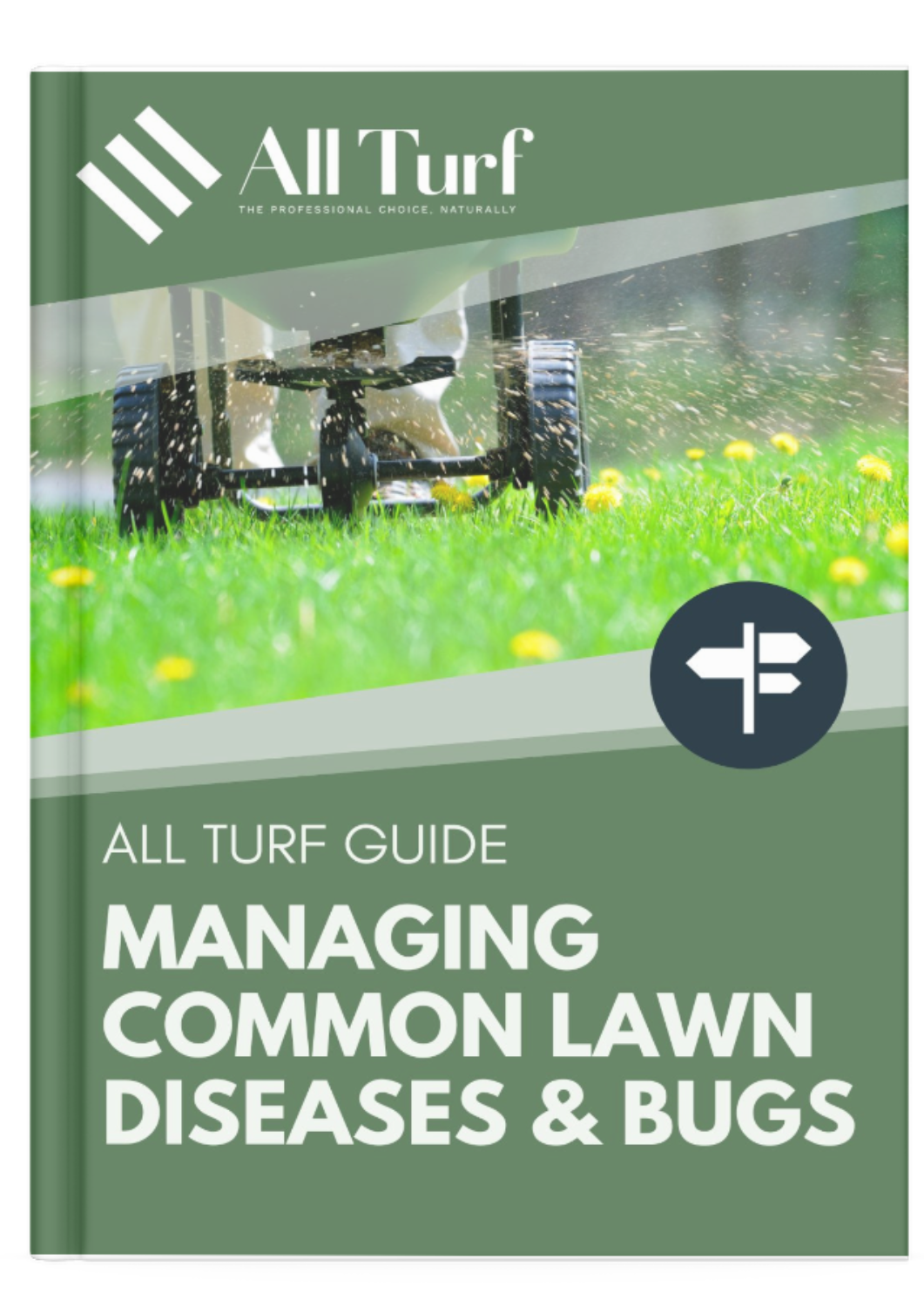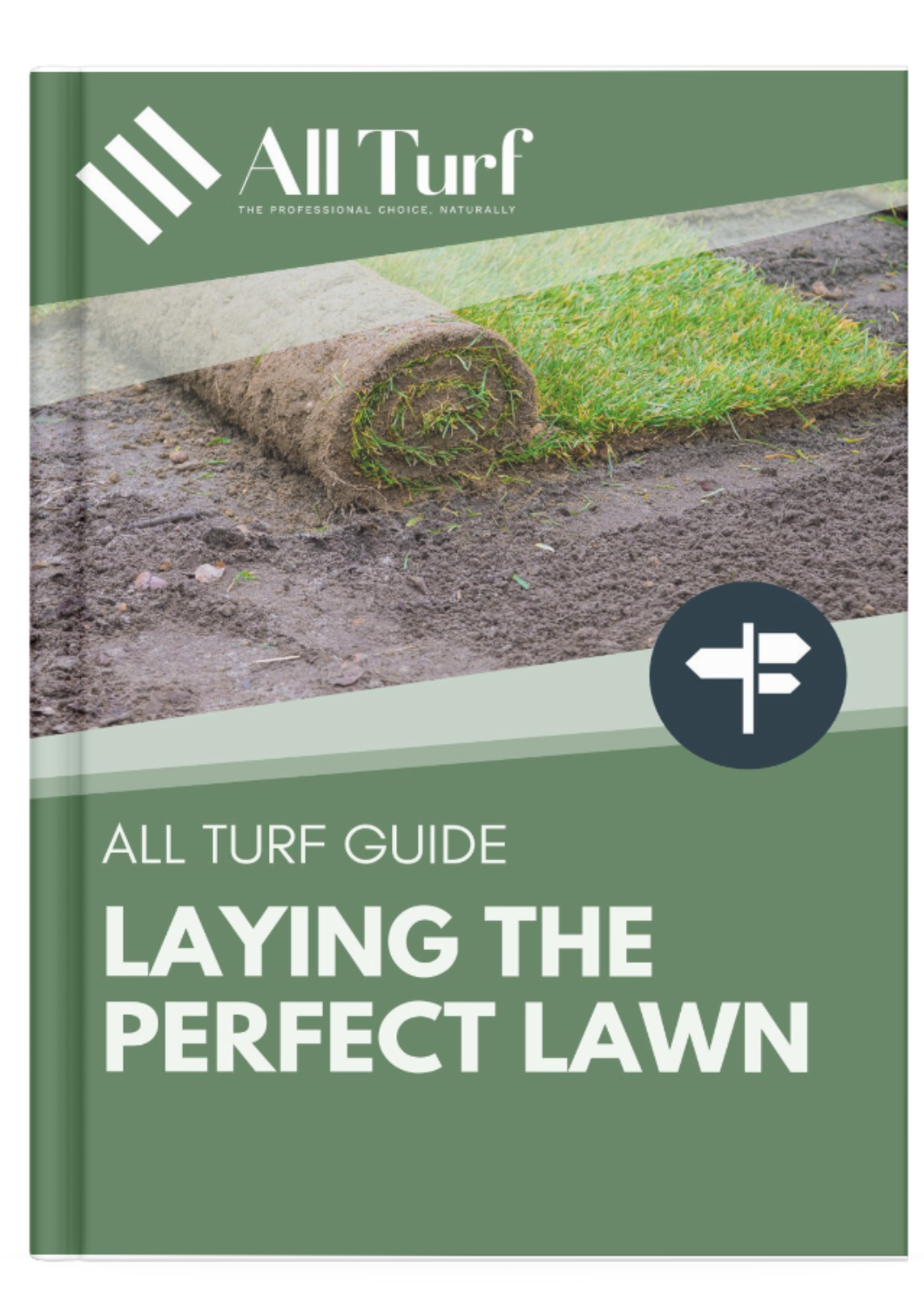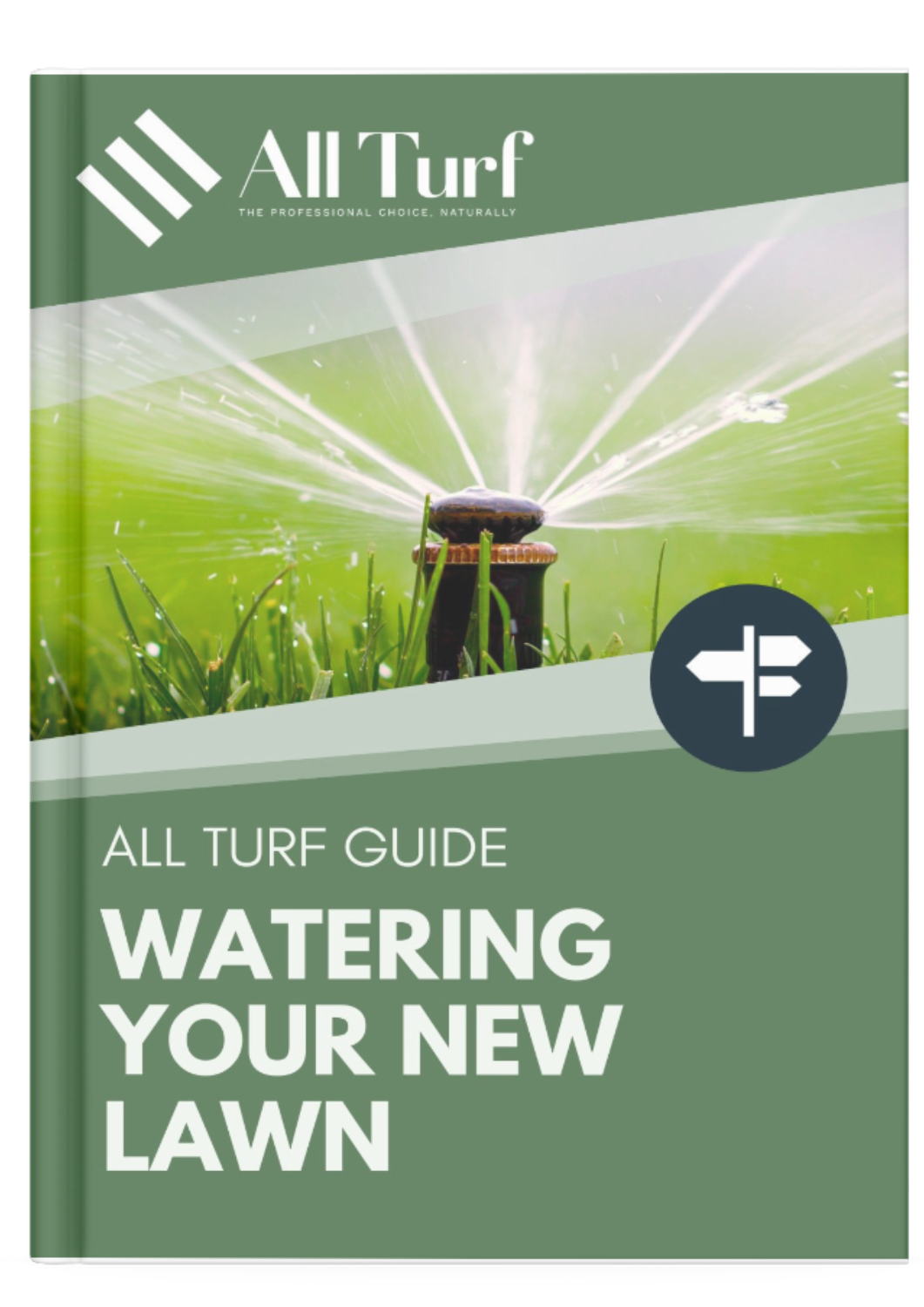ALL TURF GUIDES
Managing Common Lawn Diseases & Bugs
Guide
Managing Common Lawn Diseases & Bugs
This guide dives deep into common issues, providing understanding, remedies, and preventive measures.
Moss
Moss is often present in lawns and can be an ongoing headache. Moss thrives in damp and shade situations.
Re-turfing
When you re-turf, you will start again with a moss-free lawn; however, the moss spores are still in the ground and will gradually come back.
Preventing moss
Prevention is better than cure, and a good lawn management routine is essential.
Scarify & Areate
Scarification and aeration are key tasks; along with a good mowing regime, it is essential that you don’t mow your grass too short, as this is the most common reason for moss in your lawn.
Moss Treatments
You can also keep on top of any moss that does grow through by applying a regular moss treatment.
Thatch
What is Thatch
Thatch is a layer of living and dead organic matter. There are two types of thatch: surface and sub-surface.
Lawns often have surface and sub-surface thatch at the same time, so If a lawn has sub-surface thatch, it will usually have surface thatch, too.
Removing Thatch
Scarify to remove surface thatch and aerate to remove sub-surface thatch.
You cannot just slice the thatch layer of the lawn; it has to be thinned out by removing vertical cores.
Removal of thatch is an important part of good lawn maintenance. If left it will weaken the lawn and eventually will become prone to moss and disease.
Leather jackets
What are leather jackets?
The leatherjacket is the larvae of the Crane fly (Daddy long legs).
Crane flies lay their eggs on any grass areas, including lawns, from around September time.
When the eggs hatch into small larvae, they start to feed on the roots of the grass. At this stage, the damage will be minimal. However, by February/March time, when the larvae have grown, they can sometimes cause severe damage.
What to look out for
To begin with, you may notice bare patches appearing in the lawn, and if you lift an area and it comes up easily, you will know it is potentially caused by leather jackets or other similar grubs, such as chafer, as they eat away at the root system.
Further damage can be caused as birds and other animals root down looking for the grubs, the effects of this can be quite devastating.
Treating Leatherjackets.
Products that previously controlled leather jackets, chafers and other root-loving larvae are no longer available due to the harmful chemicals they contain. New research is ongoing,
Chafer Grubs
What are chafer grubs
The chafer grubs are the larvae of chafer beetles,
Chafers are creamy coloured with a light brown head and three pairs of distinctive legs approx.10- 15mm long when grown. They have a life cycle of 1-3 years, depending on the species.
Chafers cause similar damage as Leather jackets.
The grubs eat away at the root of the plant. First, you will see small bald patches in the lawn; if you peel the grass back, it will lift away; this damage is unsightly and can affect large areas of the lawn; further damage can also be caused by animals and birds as they dig up the lawn looking for bugs when this happens the damage to the lawn can be extensive.
Worm Casts
There are over 25 species of worms, although most varieties don’t cast worm casts.
Worms can be very beneficial for soil as they improve microbial activity and provide natural aeration.
however, worm casts are an issue that shouldn’t be ignored
When squashed, worm casts make ideal seed beds for weed seeds. When they appear, let them fully dry and then sweep them away with a stiff broom brush before mowing.
Conclusion
Like any other aspect of your home, your lawn requires attention and care. The key to a lush, disease-free lawn isn't just reacting to problems but preventing them from occurring in the first place.
With the proper knowledge and practices, you can ensure your lawn remains free from pests and diseases. So, put on those gardening gloves and ensure your lawn stays as captivating as ever!





